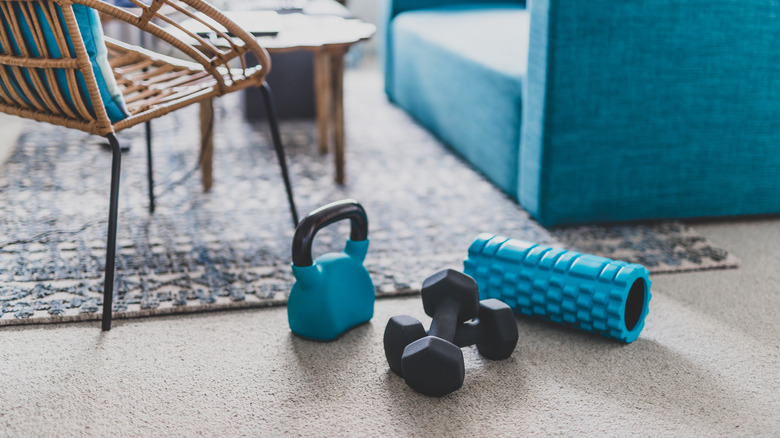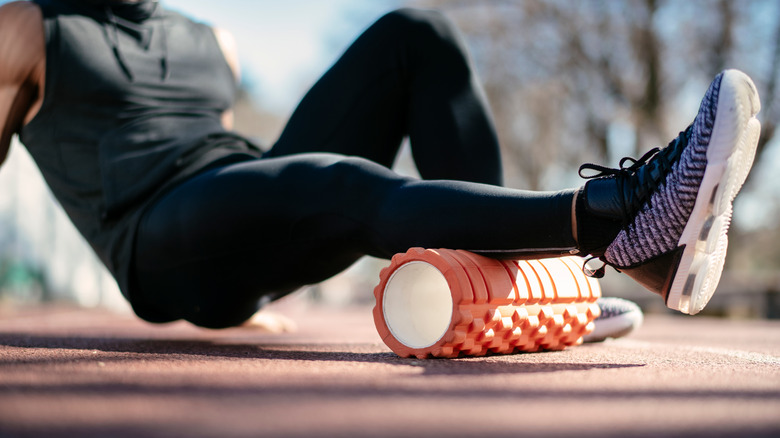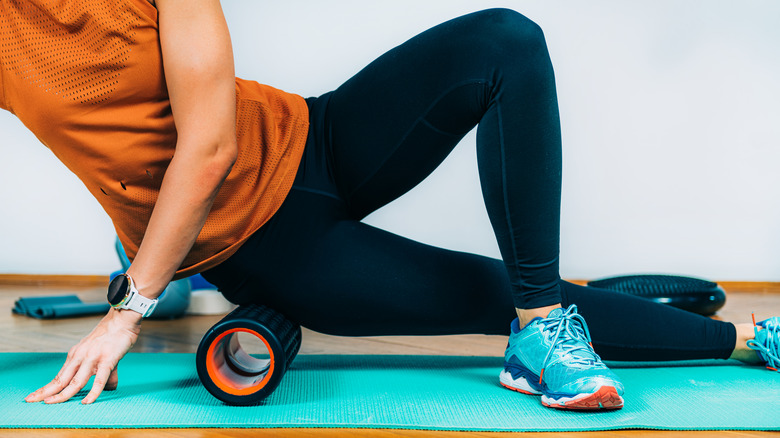Five Essential Foam Rolling Exercises To Soothe Your Sore Muscles
If you regularly experience pain and muscle soreness shortly after working out, you may want to try adding some foam rolling exercises to your post-workout routine. Believe it or not, foam rolling is a simple and effective exercise that can help your muscles repair and recover after an intense workout. According to The New York Times, foam rolling can help relieve tension and tightness in your muscles, which can help reduce muscle pain.
This pain is often a result of stiffness in your body's fascia, or connective tissue, which can prevent your joints and muscles from moving properly, restricting your flexibility and range of motion. As it turns out, exercising with stiff or misaligned fascia can cause discomfort and even increase your risk of injury. "If you can't move your shoulder because your joints or muscles are tight, you'll usually end up with an injury when you try to strengthen it," physical therapist and adjunct professor at Stony Brook University, Theresa Marko, told the New York Times.
How does foam rolling work?
Foam rolling can essentially help massage and relax your muscles and tendons and realign your fascia (via Self). That's because a foam roller is a cylindrical piece of foam that can help warm your muscles and fascia by creating friction. This can help loosen your tendons and fascia and improve your range of motion. Foam rolling may also help stimulate the nerve receptors in your brain, which could send a signal to your muscles to loosen up.
While the act of foam rolling can certainly help relieve pain, however, it shouldn't cause any pain on its own. "Muscle soreness from exercise will feel more pronounced if you apply pressure to the tender area, but foam rolling itself shouldn't really hurt at all," exercise physiologist, Dr. Lewis J. Macgregor, told Self. It's also important to only focus on your muscles, like your glutes, quads, hamstrings, calves, traps, and lats. Although many people use foam rollers to massage the IT band, a band of connective tissue that spans the length of the outer thigh between the hip and knee, experts agree that this is largely ineffective. If you're experiencing pain and soreness in this area, you should roll out your hips instead.
The best foam rolling exercises
One of the best foam rolling exercises is the lateral quad massage, which can help relieve tightness in your quads and reduce knee pain, according to Prevention. To perform this exercise, place a foam roller on the ground horizontally and lay on top of it with the right side of your thigh, keeping your right leg straight and your left foot flat against the floor. Rotate your body towards the floor and use your left arm to roll your body up and down, letting the foam roller glide from your hip to your knee. Then, switch sides.
Another great exercise is the hamstring roll out, which can release tightness in the hamstring. This exercise involves sitting with your legs in front of you and placing the foam roller under your right thigh. While bending your left knee, roll back and forth, moving the roller from your lower butt to your knee. Then, repeat. To relieve shoulder pain, try the lat smash exercise, which entails laying down with the foam roller under the right side of your torso. Extending your right arm, roll up and down, letting the foam roller sink into the muscle. To relax calf muscles, try the kneeling calf massage by kneeling with the roller between your butt and ankles, or the regular calf roll out, which involves sitting with your legs in front of you and rolling back and forth with the roller gliding from your ankles to your knees.



